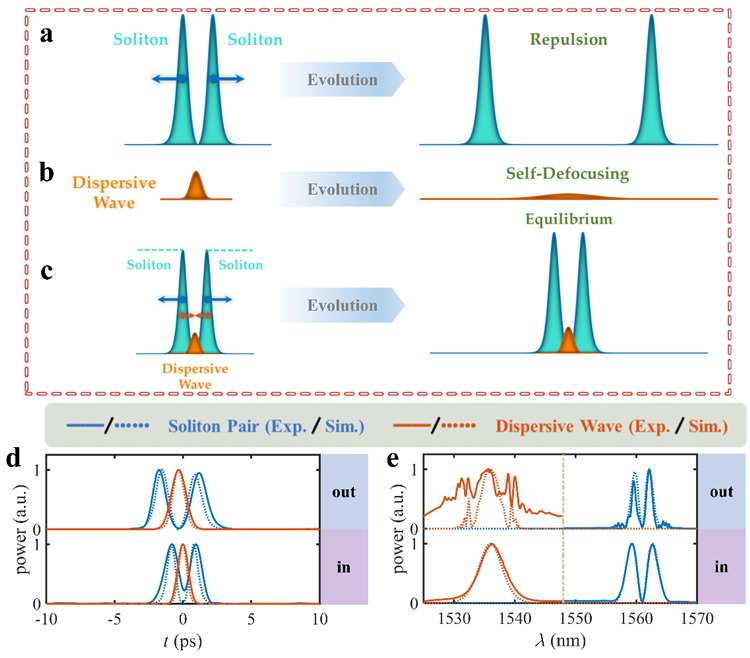NKU Team Makes Important Progress in the Nonlinear Control of Light Field

Figure 1: (a-c) Schematic diagrams of two solitons and one dispersive wave forming a pulse complex through nonlinear interaction; (d-e) experimentally realized pulse complex: (d) temporal and (e) spectral profiles.
A research team at the School of Physics, Nankai University designed and observed a localized state formed by the nonlinear binding of multiple pulses based on an optical analog to the concept of negative mass, and experimentally demonstrated the stability of the resulting pulse complex. The paper that introduces the work was published in Physical Review Letters, an international academic journal.
The optical analog of negative mass that generally introduces counterintuitive effects offers a new scheme for realizing the localization of light field. When positive and negative mass objects interact, a synchronized accelerating movement can be formed. Based on the analog of this dynamic, two optical beams can bind together and form a self-accelerating light field when interacting nonlinearly. In the framework of such a two-body model, the localization of light field must be accompanied by self-acceleration. In order to achieve the localized state without acceleration for the purpose of a wider application, many body interaction can be considered. Despite the fact that similar many-body light-field interactions have been theoretically studied for increasing optical communication capacity, they have not yet been demonstrated in experiments. The breakthrough made by the Nankai University team is expected to trigger more basic research based on the concept of negative mass and further bring about novel optical applications based on localized light fields.
(Edited and translated by Nankai News Team.)









